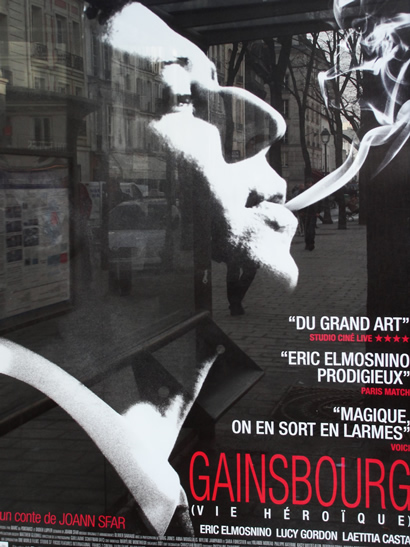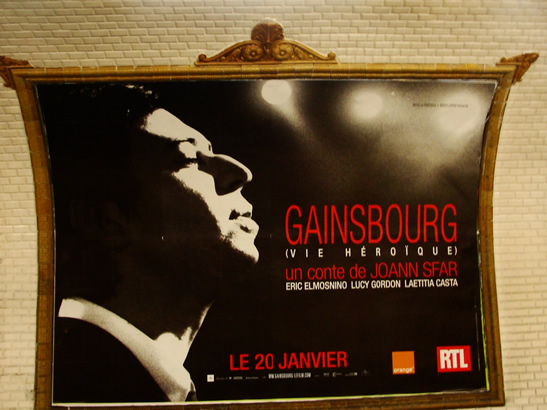Le Loup de Marcel Aymé
Le Loup is a class french children’s story about two little girls who befriend a wolf against their parents wishes. They become friends, but the wolf eventually eats them anyway. The wolf is very sorry so the girls (who have been extricated from the stomach) do not want their parents to punish the wolf. The moral of the story, I think, is not to be too greedy. It was obviously a popular children’s story with adults and children since the ages there definitely ranged from very small children who knew the story seemingly by heart to elderly adults. The story definitely made reference to other fairy tales that involved wolves such as Little Red Riding Hood and The Three Little Pigs as well as other stories that must have been known to just the French. The children loved the play, and it only took an hour so they were engaged the entire time. They would yell back at the wolf when it was appropriate and generally had a great time. I know I didn’t understand everything that was said, but even if I didn’t understand, the demeanor of the wolf was expressive, and I knew how to react by listening to the kids.
-Amanda
We went to go see Le Loup performed by La Comedie Francaise in the Studio-Theatre of the Louvre. The atmosphere was much more intimate between the performers and the audience and we could fully appreciate all the nuances in facial expression exhibited by the actors. The title character "Le Loup" ("The Wolf") is an amalgamation of all the wolves in many well recognized fairy tales, from Little Red Riding Hood to the Three Little Pigs. The story, though written with the prose of a children's story, carries many implications interpreted differently by readers or all ages. Among the other elements it presents, the story incorporates a series of juxtapositions: nature versus culture, isolation versus intrusion, ignorance versus knowledge, transgression versus redemption etc. The combination of the skillful design and manipulation of the set and the vibrant acting, struck the right balance between comedy and drama and highlighted many of the themes in the story.
-Samiksha
Songes de Béatrice Massin
We saw a baroque/contemporary dance performance at the Théâtre National de Chaillot on our second to last night. I am not terribly adept at understanding artistic dance, and this performance was no exception. Some of us did get to sit in the SECOND row, though, which meant that it looked like the dancers were going to just walk right out to us. I can’t speak much to the actual dance in the ballet. The dancers spent a lot of time walking very precisely and moving mirrors around. They either had on purple dance costume (what I thought looked like normal ballet clothes) or orange dresses with trains (men and women wore these), and everyone went barefoot. There didn’t seem to be a story, but watching the dancers move around (especially not stepping on the trains of one another’s dresses) was very interesting. I had never seen any professional performance from that close before, though, so I was in awe. We could hear the squeaking of the floorboards and the sound that their bare feet made when twisting on the wood.
-Amanda
Molière


I saw three fantastic plays by Molière: L'Avare, Les Femmes Savantes, and George Dandin. It was unreal to be able to understand the plot and humor in a language not my own--it was almost like a reward for all my years of study. Molière's characters are easy to relate to, and they get in to hilarious situations. The venues for the three plays were quite different. L'Avare we saw in La Comédie Française, which boasts a long history and a great renown--in fact, it was the original venue for L'Avare. Les Femmes Savantes was in a smaller theater, maybe 100 seats, with a much simpler sets. Finally, George Dandin was in a tiny little theater that could only hold about 20 people, and I was sitting only 10 feet away from the actors. Despite the disparity, in every case Molière's genius shone through and made the experience amazing.
- Ashley
Les films
One night, we saw a 10pm showing of “Une petite zone de turbulence”. In this film, Michel Blanc plays a man who faces hypochondria and an array of family conflicts after retirement. Although Michel Blanc’s films are usually perceived as light crowd-pleasers in France, they are generally of darker humor than mainstream American films.
Near the end of our trip, we saw another film, “Gainsbourg (vie héroïque)”. It was an artsy and sexually charged film that recounts the life of Serge Gainsbourg, the famous French singer. Two advertisements of the film were widespread: one of the protagonist’s visage accompanied by a puff of smoke, and one without. Apparently the latter was purposefully created because there is now a law that prohibits the advocacy of smoking in metro stations.


-Mónica
